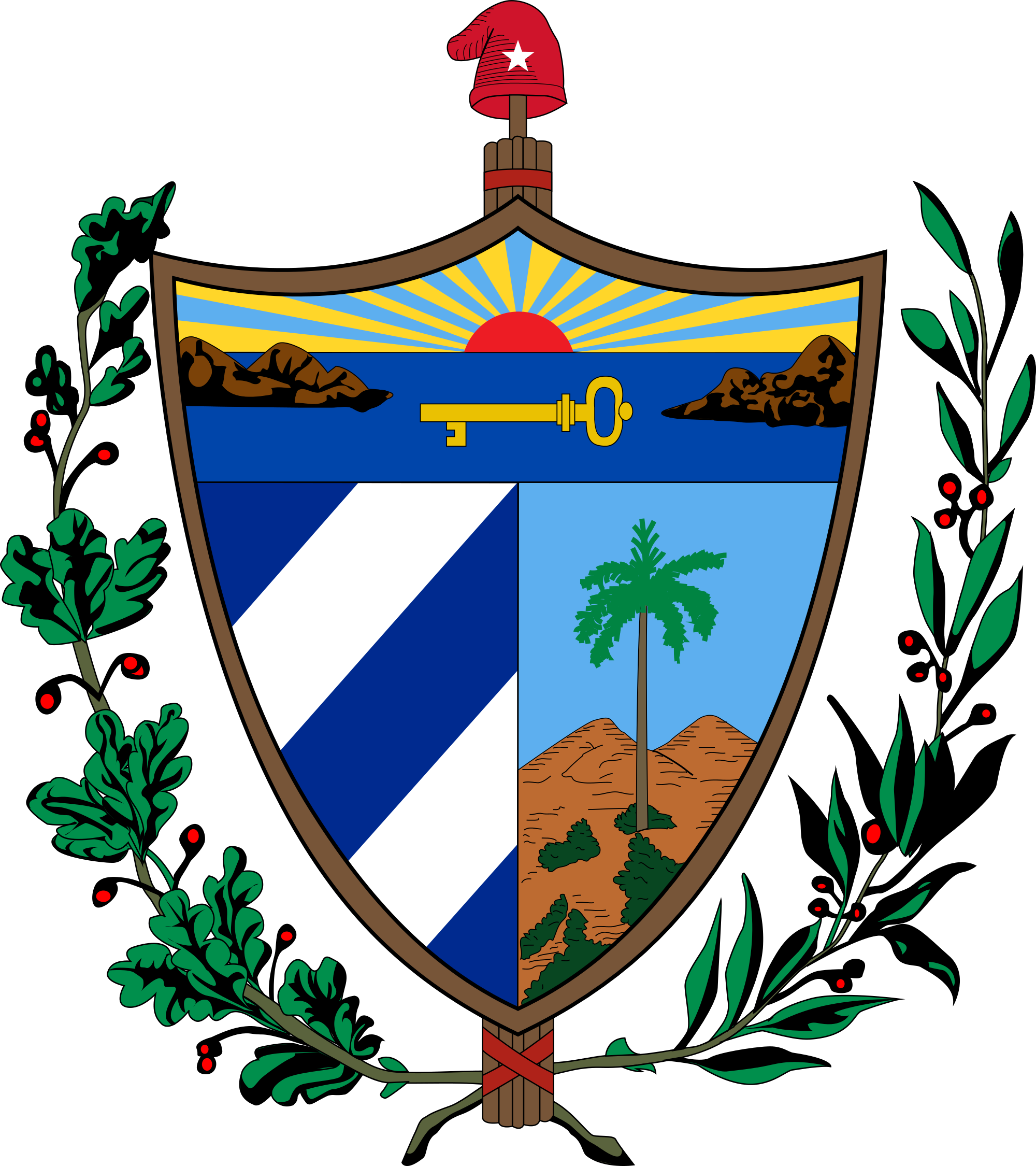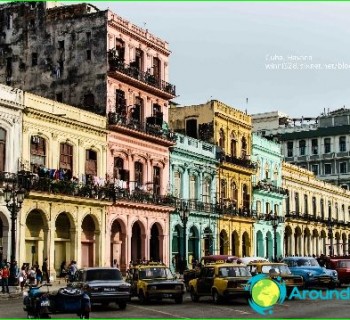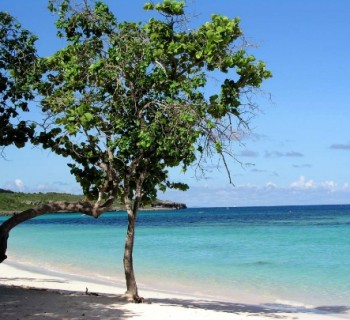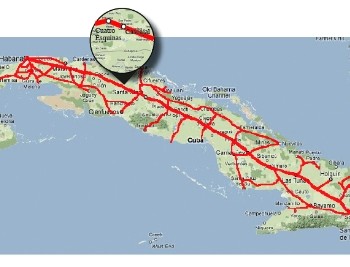Coat of arms of Cuba
Freedom Island is having a hard time in the struggle for independence. At the same time, oddly enough, the coat of arms of Cuba was invented by local residents who immigrated to the United States. All the symbols depicted on it, in one way or another, are associated with the acquisition of independence by the state, although many were afraid that the island would become one of the American states..
A brief excursion into history
Spain enslaved Cuban lands in the early 16th century. In 1516, the colonial coat of arms appeared. It consisted of two parts, at the bottom was depicted Saint Jacob, armed with a sword and riding a horse, against the backdrop of Cuban landscapes. Around it were the initials of the Spanish monarchs. The upper part of the coat of arms was given to the Virgin Mary, surrounded by angels.
The struggle for Cuban national liberation has been fought for centuries, but it did not gain momentum until the 19th century. The first appearance of national colors and Cuban symbols is associated with the conspiracy of 1809-1810. Local patriots thought not only about changing the state system, but also about the official symbols of the new free state..
It was then that green, white, red stood out from the palette, as the main colors of the flag of Cuba. At the same time, work was underway on the coat of arms, it was assumed that the central place would be occupied by the figure of an armed Indian woman, a cornucopia and bushes of flowering tobacco. Another symbol of freedom, the Phrygian cap, came from Europe.
Other patriotic secret societies in Cuba also worked on the creation of state symbols - the flag and coat of arms. They used the same colors for the flag, and the rising sun, stars, inscriptions like «Free Cuba».
The Irony of Fate
The modern symbol of the country was created by political emigrants who lived in the United States. It is a shield divided into several parts .. The left side is painted in national colors, identical to those present on the flag of the country, they are symbols of the unification of Cuban lands and territories. The right side is a sultry Cuban landscape, the pride of every inhabitant, with a royal palm tree in the center. These are symbols of the fertility and natural wealth of Cuba. In the upper area of the shield, a symbolic key is depicted, as if closing the two peninsulas (Florida and Yucatan), symbolically indicating the central position of the island of freedom.
Another bright memorable symbol is the rising sun, here are reminiscences of the country's sultry climate and dreams of the future. The Phrygian cap is a characteristic sign for the coats of arms of many countries in Latin and South America, indicating the desire for freedom. A wreath of oak and laurel leaves are symbols of vitality and victory.



